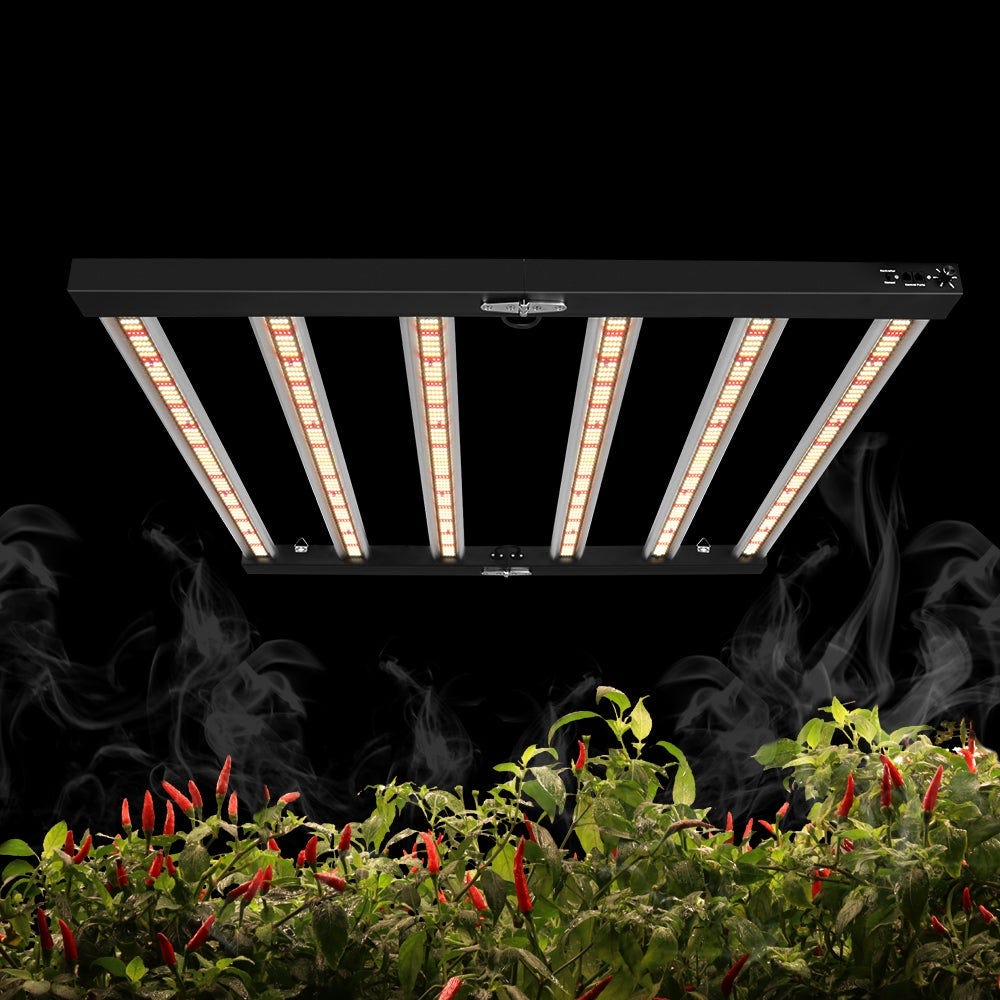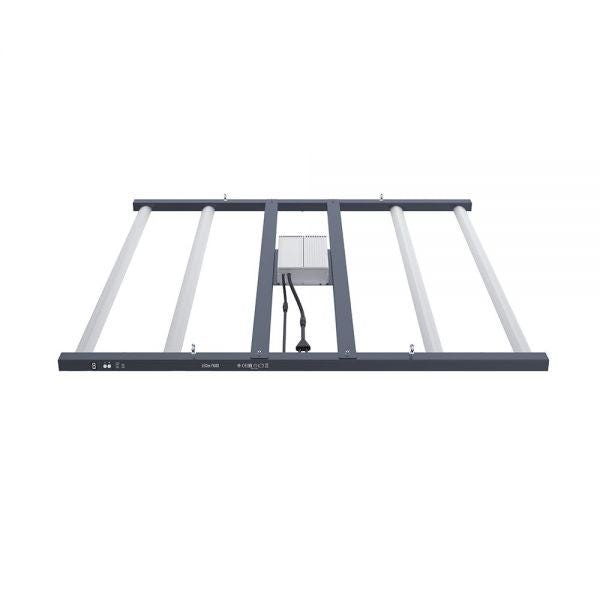- Home
- SHOP ECO FARM
-
TOP BRANDS
-
Grow Lights Brands
- Adjust-A-Wing
- Apollo Horticulture
- Bestva
- Black Dog LED
- California Lightworks
- ChilLED Grow Light
- Eco Farm
- HLG - Horticulture Lighting Group
- Kingled
- Kind LED
- Mars Hydro
- Morsen
- Neilo
- NextLight
- Phlizon
- PlatinumLed
- Roleadro
- Optic LED Grow Lights
- ViparSpectra
- Vivosun
- EYE Hortilux
- IPOWER
- NanoLux
- Phantom grow light
- Gavita grow lights
- Grower's Choice
- Lumatek
- Maxibright
- Yearld Pro
- ThinkGrow
- Crecer Lighting
- Green Sunshine Electric Sky
- fohse aries
- loriflux
- luxx
- fluence
- iluminar
- Lex
- LTC
- Rayonled
- FGI
- PHOTONTEK
- Grow Tents & Kits Brands
- Extraction & Harvest Brands
- Climate Control & Hydroponic Brands
-
Grow Lights Brands
- COMPANY INFO
- COOPERATE WITH US
- Blog
- Sign in
- Home
-
SHOP ECO FARM
- ECO Farm Grow Lights
- ECO Farm LED Grow Lights
- ECO Farm Quantum Board
- ECO Farm Samsung LED Grow Lights
- ECO Farm COB Grow Lights
- ECO Farm Commercial Lights
- ECO Farm Supplemental Grow Light
- ECO Farm Fluorescent grow lights
- ECO Farm HPS & MH Grow Lights
- ECO Farm CMH Grow Lights
- ECO Farm HID/CMH Bulbs & Ballasts
- ECO Farm Grow Tents & Kits
- ECO Farm 2x2ft Grow Kits
- ECO Farm 3x3ft Grow Kits
- ECO Farm 3.3x3.3ft Grow Kits
- ECO Farm 4x4ft Grow Kits
- ECO Farm 5x5ft Grow Kits
- ECO Farm Grow Tent - Standard Style
- ECO Farm Grow Tent - Extension & Roof & Lodge Style
- ECO Farm Extraction & Harvest
- ECO Farm Rosin Press Machine
- ECO Farm Dry & Wet Trimmers
- ECO Farm Oil Accessories
- ECO Farm Medicinal Plants Grinder
- ECO Farm Medicinal Plants Containers
- ECO Farm Medicinal Plants Dryer
- ECO Farm Refrigeration Dryer
- ECO Farm Climate Control & Other Accessories
- ECO Farm Inline Duct Fans
- ECO Farm Oscillating Fans
- ECO Farm Exhaust Fans
- ECO Farm Air Filter
- ECO Farm Duct Muffler
- ECO Farm Ventilation Kits
- ECO Farm Plant Humidifiers
- ECO Farm Plant Dehumidifiers
- ECO Farm Hydroponic Accessories
- ECO Farm Other Accessories
- ECO Farm Hydroponics Microscopes
-
TOP BRANDS
- Grow Lights Brands
- Adjust-A-Wing
- Apollo Horticulture
- Bestva
- Black Dog LED
- California Lightworks
- ChilLED Grow Light
- Eco Farm
- HLG - Horticulture Lighting Group
- Kingled
- Kind LED
- Mars Hydro
- Morsen
- Neilo
- NextLight
- Phlizon
- PlatinumLed
- Roleadro
- Optic LED Grow Lights
- ViparSpectra
- Vivosun
- EYE Hortilux
- IPOWER
- NanoLux
- Phantom grow light
- Gavita grow lights
- Grower's Choice
- Lumatek
- Maxibright
- Yearld Pro
- ThinkGrow
- Crecer Lighting
- Green Sunshine Electric Sky
- fohse aries
- loriflux
- luxx
- fluence
- iluminar
- Lex
- LTC
- Rayonled
- FGI
- PHOTONTEK
- Grow Tents & Kits Brands
- Apollo Horticulture
- Black Box
- CoolGrows
- Eco Farm
- GrowLab
- Gorilla Grow Tents
- Mars Hydro
- Quictent
- Secret Jardin
- Unit Farm
- TopoGrow
- VIVOSUN
- Topolite
-
COMPANY INFO
-
COOPERATE WITH US
- Blog
ECO Farm SP-600 Samsung Foldable Dimmable Full Spectrum LED Grow Light VS Super Lumen Beam 600 Watt LED Grow Light
December 27, 2021
Here you will learn how to create the best greenhouse climate for your crop with the ultimate guide to greenhouse grow lighting.
Grow lights are designed to give plants the light they need for vital chemical reactions for healthy growth when the sun’s rays just are not enough. They are essential for plants in greenhouses so they can carry out the process of photosynthesis, while protecting from the rain, wind, animals, pests that damage the plants, and cold temperatures.
How do you choose the best grow lights for your greenhouse? Keep reading on to find out.
Grow Light Wattage
The lights, whether traditional bulb or light-emitting diode (LED), are rated in watts. This is a measure of power consumption and energy for the plants. A higher wattage light will be able to penetrate further into a plant’s canopy hitting lower down leaves.
The watts are mainly consumed by the creation of light and heat, a light that produces less heat is generally more efficient and will deliver more light energy per watt to your plants. Individual LED chips come in 1,3,5, and 10-watt sizes, higher wattage chips need to be spaced apart for cooling which can lower the overall density of the light.
How Many Watts For Your Garden Space?
The wattage is directly related to the intensity of your light. If you have a higher wattage fixture, you can put the light further away from your plant. The light will then cover a larger area.
A good rule of thumb is to have 25–50 watts per square foot of grow space. This means a 500 watt LED grow light can cover 10–20 square feet.
The caveat to increasing the wattage is the efficiency of your lighting system. Traditional bulbs are very inefficient compared to LED’s, this causes a lot of the wattage to be lost through heat rather than becoming light for the plant. A 500 watt LED light can provide equivalent ratings to a 1000 watt HPS or MH light.
Providing the correct intensity, spectrum and cycle interval of lighting to your plants will ensure you get the maximum growth and harvests possible.
ECO Farm SP-600 Samsung Foldable Dimmable Full Spectrum LED Grow Light

Features:
This ECO Farm LED grow light adopts 1632pcs High-efficacy horticultural SAMSUNG LM281B diodes, providing light output PPFD up to 1764umol/s, achieving a high energy efficiency of 2.8 umol/J, creating more ideal light level for professional&commercial growers. Perfect for 6'x6' vegetative coverage and 5'x5' flowering coverage Horizontal&Vertical Growing. The grow light uses lm281b LEDs(3000k+5000k) +RED 660nm+IR 730nm +UV 395nm, which provides powerful light output, infinitely close to sunlight, providing a complete natural spectrum, speeding up the growth and flowering time of plants, achieving higher yield up to 2.5g/W, and being suitable for the growth of plants at all stages. Unique 180 degrees fold up and Plug&Play design, compact and easy to be installed. 6 passive-cooled LED bars, provide more even canopy coverage and better air flow, reduce environmental heat in the growth space for extended lifespan, and special surface treatment of the aluminum heat sink to increase the heat dissipation area, saving up to 50% of energy than other grow lamps.
Super Lumen Beam 600 Watt LED Grow Light

Features:
SUPER LUMEN grow light is a high-quality LED light that can be used throughout your growth cycle. The design of the LED allows the lamp to be folded down for easy transportation and installation. The digital control button on the side of the lamp can fully control your temperature and dimming. Its dimming range is 100W, 200W, 300W, 400W, 500W and 600W. SUPER LUMEN Beam allows random start or soft start according to your preference. SUPER LUMEN Beam also has an LED light bar protection function, which means that if one of the light bars fails, the life and power supply of the other light bars will never be affected. The IP65 design ensures that the LED is waterproof, moisture-proof and dust-proof.
How To Choose an LED Grow Light?
Let’s take a look at some of the things you should keep in mind when selecting an LED grow light:
Heat Output
Watch out for models that don’t have built-in cooling systems. Without adequate ventilation, it can get sweltering inside the grow area, damaging your plants and significantly increasing your energy bill.
Intensity Control
LED lights can be turned up very high to boost the growing speed of your plants. Most indoor gardeners need just one light that’s bright enough for all stages of growth, but this isn’t always possible with older models.
All-in-one units have separate controls for each color, allowing them to be dimmed down when they’re not needed.
Light Spectrum
Both plants and humans respond well to colors in the red and blue spectrum, but other colors can achieve specific effects. Look for a model with a full range of color options if you want to experiment with different light configurations.
Coverage Area
How big is your growing area?
LED grow lights typically emit light in a 90-degree cone. If you want the most intensity, position the light close to the plants (but not directly over them).
If you need even coverage throughout a large space, it’s better to hang several smaller lights instead of one big one.
Energy Efficiency
LED grow lights are much more energy-efficient than the old high-pressure sodium (HPS) lights.
They also last much longer, which means you can save money on maintenance over time.
Taking all of these factors into account, make sure you do some research before you buy. Choose the right grow light for your needs, and you’ll be well on your way to growing beautiful, healthy indoor plants that produce big harvests.
Conclusion
The most important thing to remember about growing houseplants with grow light is that it is possible! While it’s easy to get wrapped up in all the terminology and types of light, don’t be intimidated by using grow lights. By implementing artificial light, you can add plants to your home you would otherwise be unable to grow.
Also in Indoor Grow LED Grow Light
HLG Greenhouse Pro HE HV 630W LED Grow Light VS Geeklight grow light 480W hydroponic led grow light
October 20, 2023
